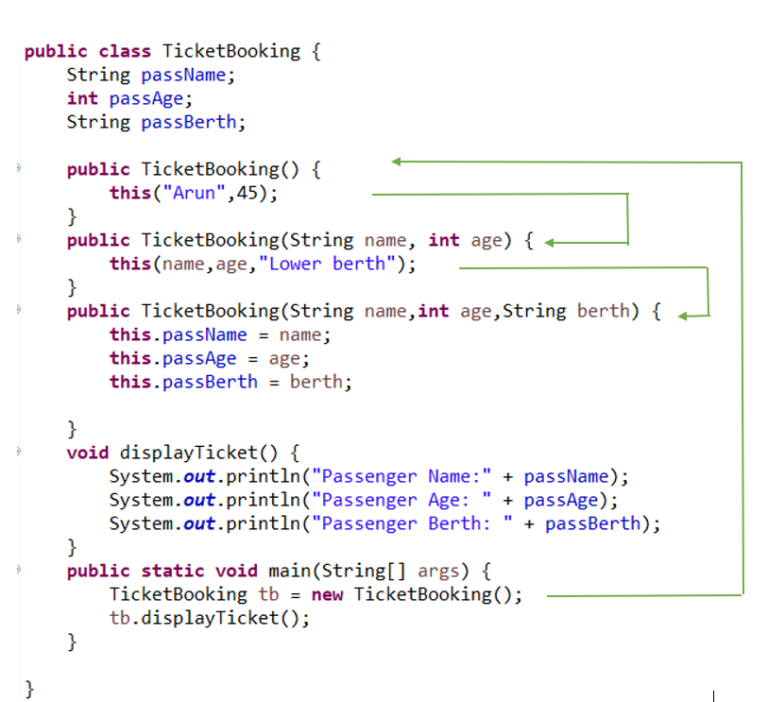

The parameter list can be specified in the parenthesis in the same way as parameter list is specified in the method. These different set of values initialized to objects must be passed as arguments when constructor is invoked. Using parameterized constructor, it is possible to initialize objects with different set of values at time of their creation. The constructor which has parameters is known as parameterized constructor. Then we create a class DisplayDemo which inherits the methods from above class Display: class DisplayDemo Let us consider a program to demonstrate the use of the default values, initialize expressions and constructors.įirstly we create a class Display in which we declare default constructor: class DisplayĪ=4 //override default and initializer expression Important Note: Constructors are invoked only after the instance variables of a newly created object of the class have been assigned their default initial values and after their explicit initializers are executed. The default constructor looks like: public Rectangle() Its only purpose is to enable you to create object of class type. It does not contain any parameters and doesn’t even contain any statements in its body. So in such situations, the compiler automatically creates one constructor which is known as default constructor. But in some programs if we don’t create any constructor. Copy Constructor – Constructor which creates a new object using an existing object of the same class and initializes each instance variable of newly created object with corresponding instance variables of the existing object passed as argumentīelow we have describe all three constructor in detail with example:Įach time an object is created, a constructor is always invoked.Parameterized Constructor – Constructor with parameter which make possible to initialize objects with different set of values at time of their creation.

Default Constructor – Compiler automatically creates one constructor if we don’t create.This method of initializing instance variables of an objects using constructor is very simple and concise as there is no need to explicitly or directly call the method of each object separately. Then the address of the allocated Rectangle object is returned and assigned to the reference variable r.Then the constructor(Rectangle()) is called and the statements in its body are executed.In the above program when the statement: Rectangle r=new Rectangle() is executed the new operator creates a new but object of the class that is uninitialized.Then we create a class ConstructorDemo which inherits the above class Rectangle and is used to create objects of the Rectangle class and calculate its area: //class to create a rectangle objects and calculate area declare method to calculate area of rectangle declare constructor to initialize length and breadth of rectangle
Java this constructor how to#
Let us consider the program that gives us the use of constructor to initialize the instance variables of the newly created object.įirstly we make a class Rectangle in which we declare constructor and method to show how to use it: //use of constructor Each parameter specification, if any, consists of a type and a name and are separated from each other by commas. The parameterList is the list of optional zero or more parameters that are specified after the class name in the parenthesis. Here, the constructorName is same as the name of class it belongs to. The syntax of constructor is as follows: ConstructorName() This is accomplished using a special method in java known as constructor that makes an object to initialize itself at the time of its creation without the need to make separate call to the instance method. This would be inconvenient if the number of objects is very large.Ī better solution to the above problems is to initialize values to the object at a time of its creation in the same way as we initialize values to the variable of primitive data types. But it would have to be called explicitly for each object.

However it can be tedious job to initialize the instance variables of all objects individually.

In the first approach we use a dot operator to access and assign values to the instance variables for each object individually.It can be done by using following two approaches: In object oriented programming language (OOPL) like java, the need of initialization of fields of a new object is even more common. We can initialize variables of primitive types at the time of their declarations. Initializing a variable is very helpful while making programs. 8 Important Points to Remember About Constructor:.


 0 kommentar(er)
0 kommentar(er)
